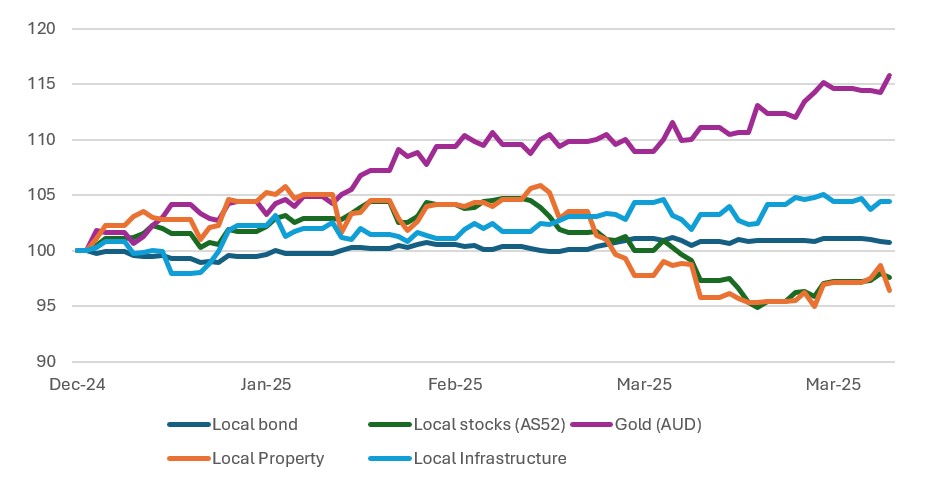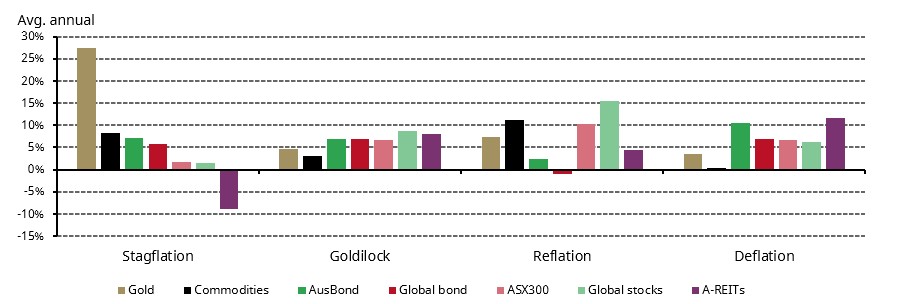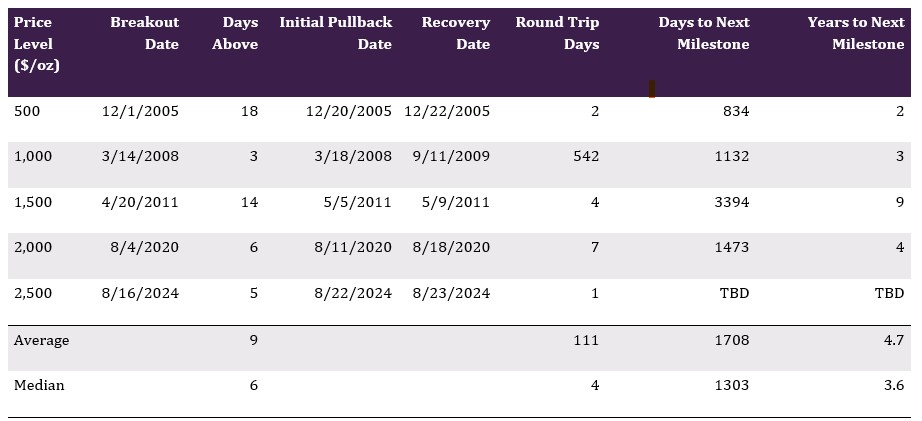What the new US$3,000 era for gold means for investors
After surpassing the ‘psychological’ US$3,000/oz milestone on 14 March, gold has marched higher, prompting many to ask, “What keeps driving gold’s momentum?”
In short, it is due to a confluence of macroeconomic trends such as geopolitical and geoeconomic uncertainty, concerns over stagflation in the US, lower rates, and a weaker dollar. These factors continue to provide tailwinds for investment demand for gold. For Australian investors, domestic factors also play a role—notably, the Reserve Bank of Australia's (RBA) stance on inflation and economic growth may influence how gold in AUD performs.
How have Australian assets performed year-to-date?
Gold priced in AUD has outpaced local equities, bolstered by global price momentum and domestic currency effects. For Aussie investors, this highlights gold’s role not just as a global hedge but also as a currency hedge, especially for those already with an existing gold position. Early 2025 has posed some challenges to the broader equity markets, with ASX 300 declining 2% y-t-d, while other asset classes showed a mixed bag. Australian property declined y-t-d, while infrastructure posted 4% over the same period. Gold, priced in AUD, on the other hand, returned double digits, marked by heightened volatility across the globe, especially with tariff threats by the U.S. While the latter has been a debated topic of late, the dynamics of tariffs are not straightforward. While they might be inflationary in a very strong economy, they could also lower spending in a weaker one.
Chart 1: Performance of Australian assets 2025 y-t-d.

A Perfect Storm for Gold
Renewed tariff concerns have cast fresh doubts on the trajectory of global economic growth and the strength of the US economy. Add that to a backdrop of geopolitical uncertainty and fresh calls for increased military spending, it is no surprise that investors are questioning what lies ahead. The macro forces we highlighted earlier – geopolitical tensions, U.S stagflation concerns, weaker dollar and lower rates - have historically been positive drivers for gold. Our research shows that a move up in the Geopolitical Risk (GPR) Index of 100 points is typically linked to a 2.5% increase in the price of gold, all else equal.
Chart 2: Performance of asset classes during different market regimes

Data to 31 March 2025. Based on returns in AUD between 31 December 2024 and 31 March 2025. Indices used: Bloomberg AusBond Composite 0+ Yr Index, LBMA Gold Price PM, ASX300 Index, ASX 300 A-REIT Index, FTSE Developed Core Infrastructure 100% Hedged to AUD Net Tax (Super) Index, Bloomberg Commodity Index, Bloomberg Global-Aggregate Total Return Index, MSCI World Index
Similarly, a 50-basis-point rise in 10-year break-even inflation expectations is typically associated with an approximate 4% rise in gold prices. A 50-basis-point fall in 10-year Treasury rates over the long run has been associated with a 2.5% rise in gold.
We can view this relationship through how different asset classes have historically performed across macro regimes. A standout during periods of stagflation, gold has delivered an average annual return of 25%, outpacing other asset classes. This contrasts with other regimes, such as Goldilocks and reflation, where equities and risk assets are in favour, and gold continues to provide support to the portfolio.
In the current climate, gold’s strategic value in a portfolio is reinforced. For Australian investors, this adds another layer to gold’s relevance—not just as a hedge but as a performance contributor in uncertain times. However, in view of the current pace of gold price movement, it will be no surprise to see some price pull-back in the short term, proving attractive for currently underweighted portfolios.
As my colleague Taylor Burnette said in his recent note, Gold hits $3,000 – What comes next?
“Even strong rallies need to catch their breath”, so the saying goes.
The jump from US$2,500/oz to US$3,000/oz took just 210 days – a notably faster move that underscores the momentum gold has built over the past two years (Chart 1). Compare that to the approximate 1,700 days that gold took, on average, to achieve previous US$500/oz increments, and the move stands out (Table 1).
Table 1: Historical gold price support & resistance level overview
Historical gold price support and resistance level summary*

*Based on the LBMA Gold Price PM as of 14 March 2025. Breakout date defined as first day gold broke through resistance. Pullback date defined as first date that gold fell through support level (resistance level it just broke). Recovery date is the date in which gold round tripped back through its prior support/resistance level and stayed above that.
Source: Bloomberg, World Gold Council
Chart 3: Gold’s recent surge defied historical trends, reaching $3,000 in record time
Historical price data shows gold has averaged 1,708 days to climb $500 increments, yet the latest jump took just 210 days.
![*Each vertical lines signifies the date when each initial $500 incremental level was breached starting with $500 (far left side) and the last line (furthest to the right) representing $2,500Source: Bloomberg, World Gold Council
[1]. Indicative Bloomberg data on spot gold (XAU) suggests that gold broke through US$3,000/oz around 10:15 GMT/6:15 am ET on 14 Friday 2025. Based on the LBMA Gold Price PM, as of 14 March 2025.](https://www.livewiremarkets.com/rails/active_storage/blobs/proxy/eyJfcmFpbHMiOnsibWVzc2FnZSI6IkJBaHBBN2ozREE9PSIsImV4cCI6bnVsbCwicHVyIjoiYmxvYl9pZCJ9fQ==--62d36c42f00f1a4f4657197b2e2363227627a419/wgc4.jpg)
*Each vertical lines signifies the date when each initial $500 incremental level was breached starting with $500 (far left side) and the last line (furthest to the right) representing $2,500Source: Bloomberg, World Gold Council
[1]. Indicative Bloomberg data on spot gold (XAU) suggests that gold broke through US$3,000/oz around 10:15 GMT/6:15 am ET on 14 Friday 2025. Based on the LBMA Gold Price PM, as of 14 March 2025.
In view of the speed of gold’s latest move, it would not be surprising to see some price consolidation. But despite potential short-term volatility, the most important determinant for gold’s next move is whether fundamentals can provide long-term support to its trend. As we discussed in our recent Gold Demand Trends, while price strength will likely create headwinds for gold jewellery demand, push recycling up and motivate some profit-taking, there are many reasons to believe that investment demand will continue to be supported by a combination of geopolitical and geoeconomic uncertainty, rising inflation, lower rates and a weaker US dollar.
In the long term, drivers of gold demand continue to provide fundamental support to the market, making gold not only a safe-haven asset but also a smart one to consider holding in these unprecedented times – and beyond.
World Gold Council
We are a membership organisation that champions the role gold plays as a strategic asset. Our team of experts build an understanding of the use case and possibilities of gold through trusted research, analysis, commentary and insights.
2 topics

